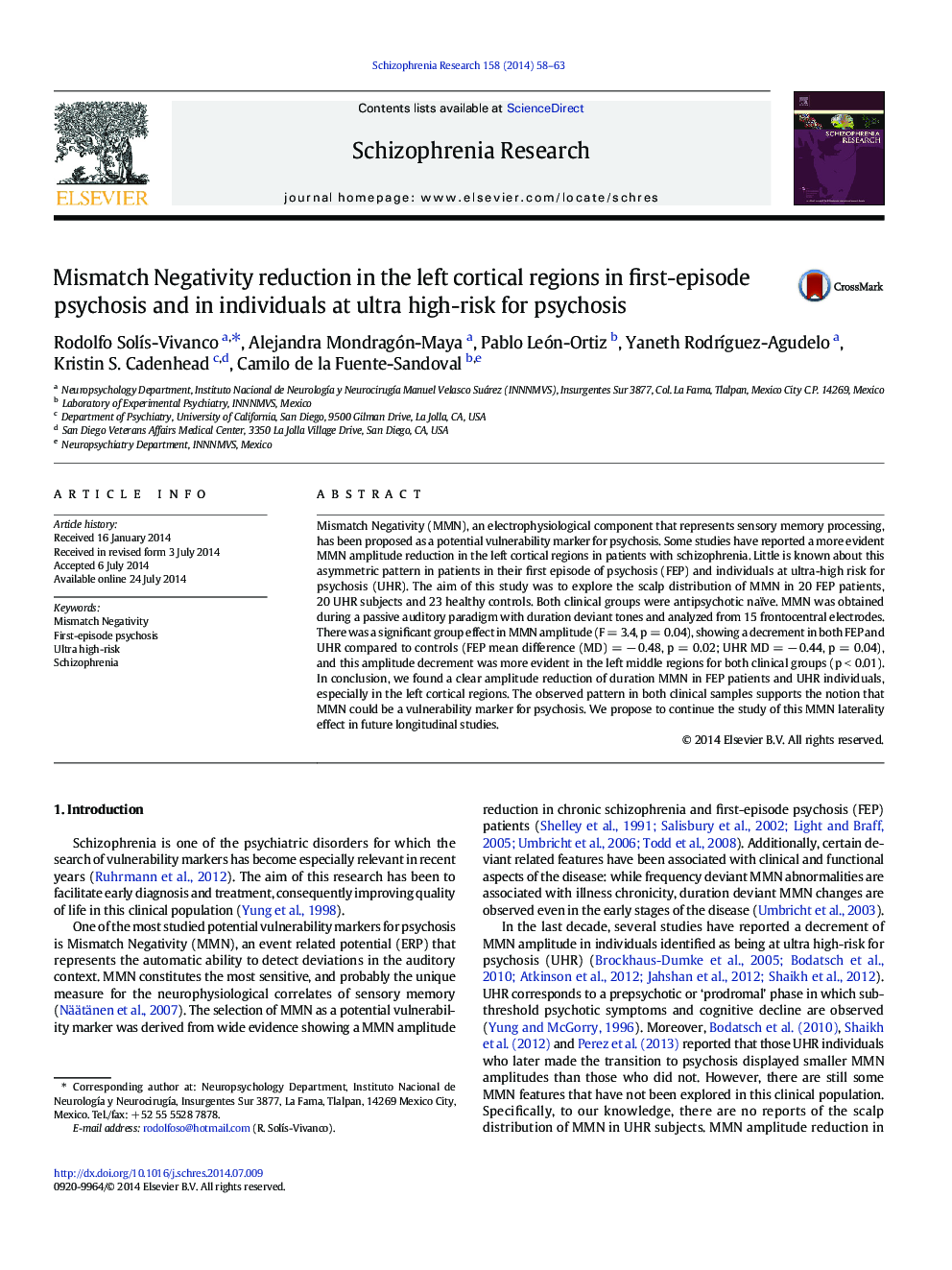| Article ID | Journal | Published Year | Pages | File Type |
|---|---|---|---|---|
| 6824655 | Schizophrenia Research | 2014 | 6 Pages |
Abstract
Mismatch Negativity (MMN), an electrophysiological component that represents sensory memory processing, has been proposed as a potential vulnerability marker for psychosis. Some studies have reported a more evident MMN amplitude reduction in the left cortical regions in patients with schizophrenia. Little is known about this asymmetric pattern in patients in their first episode of psychosis (FEP) and individuals at ultra-high risk for psychosis (UHR). The aim of this study was to explore the scalp distribution of MMN in 20 FEP patients, 20 UHR subjects and 23 healthy controls. Both clinical groups were antipsychotic naïve. MMN was obtained during a passive auditory paradigm with duration deviant tones and analyzed from 15 frontocentral electrodes. There was a significant group effect in MMN amplitude (F = 3.4, p = 0.04), showing a decrement in both FEP and UHR compared to controls (FEP mean difference (MD) = â 0.48, p = 0.02; UHR MD = â 0.44, p = 0.04), and this amplitude decrement was more evident in the left middle regions for both clinical groups (p < 0.01). In conclusion, we found a clear amplitude reduction of duration MMN in FEP patients and UHR individuals, especially in the left cortical regions. The observed pattern in both clinical samples supports the notion that MMN could be a vulnerability marker for psychosis. We propose to continue the study of this MMN laterality effect in future longitudinal studies.
Related Topics
Life Sciences
Neuroscience
Behavioral Neuroscience
Authors
Rodolfo SolÃs-Vivanco, Alejandra Mondragón-Maya, Pablo León-Ortiz, Yaneth RodrÃguez-Agudelo, Kristin S. Cadenhead, Camilo de la Fuente-Sandoval,
